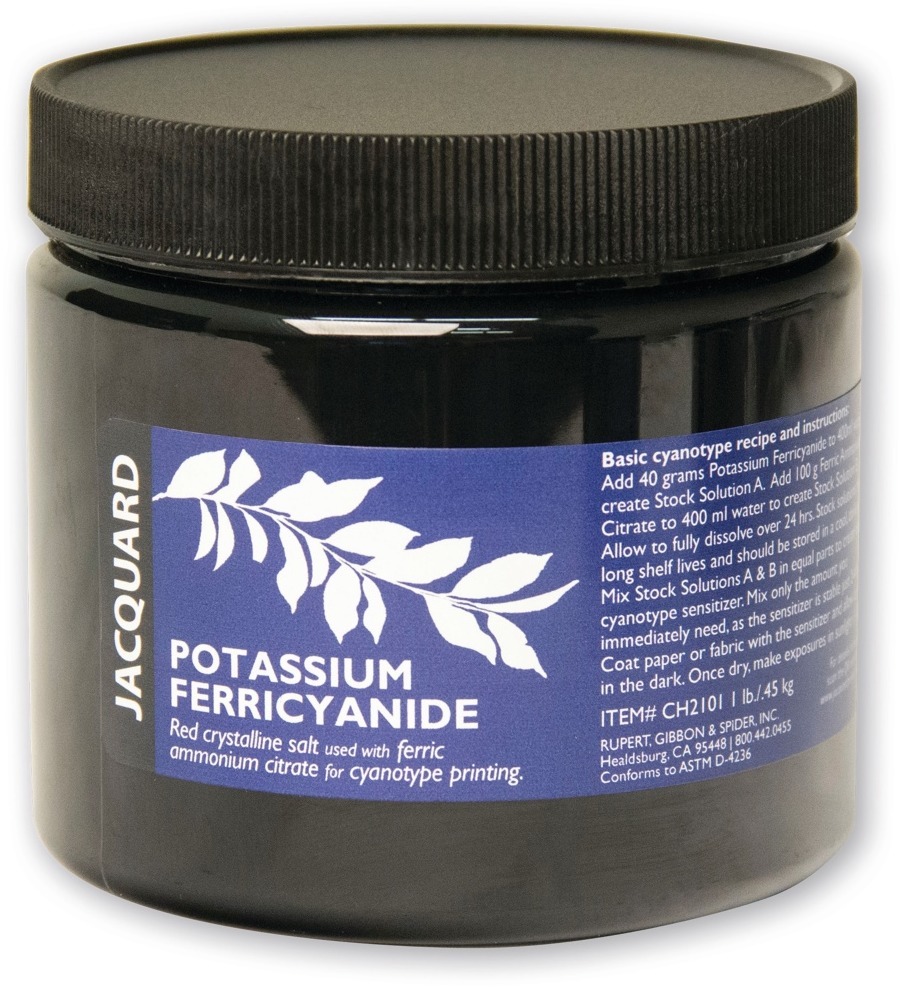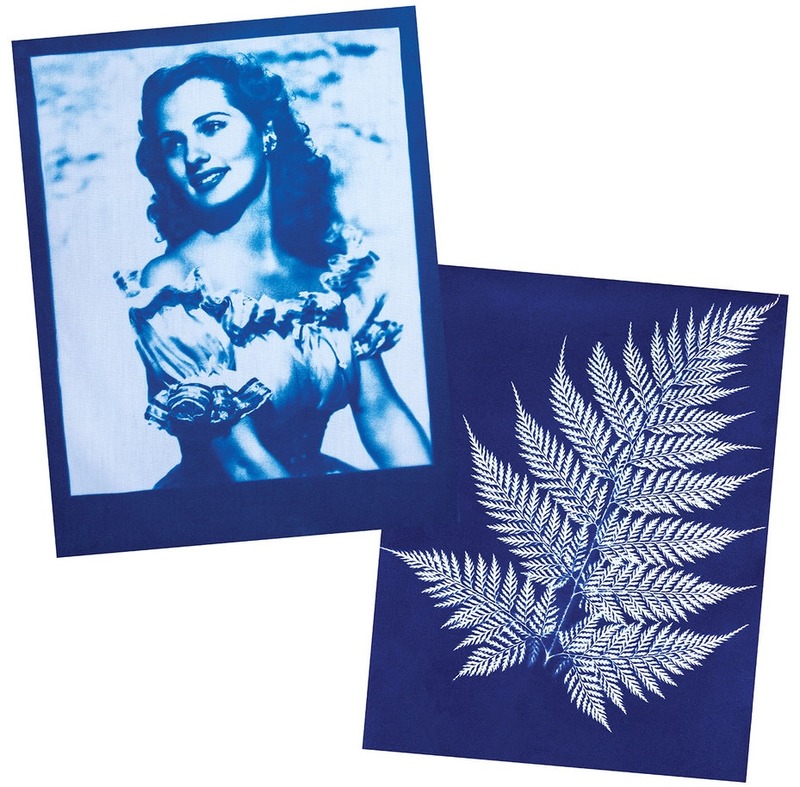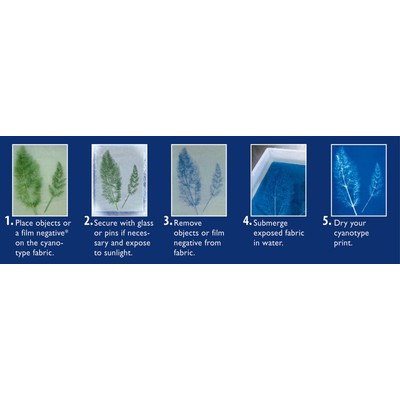Part A: Potassium Ferricyanide - A red iron salt used with Ferric Ammonium Citrate for cyanotype.
Cyanotype is the "original" sun-printing process, one of the earliest photographic techniques. Discovered in 1842 and distinctive for producing rich, Prussian blue monochromatic prints, Cyanotype was popular well into the 20th century as an inexpensive method for reproducing photographs, documents, maps and plans (hence the enduring architectural term "blueprint") and famously, for making impressions of biological specimens in the field ("photograms").
Harness the power of the sun to make detailed prints from virtually any object that casts a shadow: tools, toys, plants, leaves, stones, sand, string, lace, etc. Simply place the object on the sensitized surface and expose to sunlight (UV). Use a digitally-printed photographic negative (an inverted black and white photo inkjet-printed onto a transparency*) instead of an object to create full-resolution photographs on paper or fabric. Great for photographers, mixed media artists, printmakers, quilters, kids and more, the cyanotype process is easy, forgiving, quick, magical and fun. Capture the nuance of every shadow - a fun group activity for any age!
FABRIC/FIBER/SURFACES
any natural fiber/porous surface, including cotton, linen, silk, canvas, wool, paper, wood and leather







